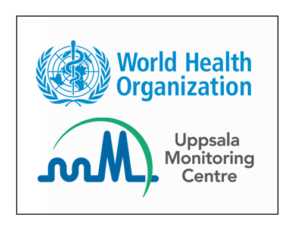Run by Uppsala Monitoring Centre (UMC), which provides scientific leadership and operational support to the WHO, VigiBase reports of suspected ADRs are available to public-health officials and medical professionals in an effort to “contribute to a global culture of patient safety and well-being,” with further investigation of unknown or not well described ADRs being “of paramount importance.”
In April of this year, VigiBase, the largest and most comprehensive pharmacovigilance database in the world, was opened to the public for the first time via its VigiAccess program.
PFS patients, their family members and/or health care providers should file ADR reports to the appropriate official in their country. (All reports will remain confidential in that patient names are never disclosed to the public.)
To download the list of officials in the 146 nations currently participating in the VigiBase program, click here.
The U.S. Food and Drug Administration’s is among the participating agencies, and accepts ADRs from outside the U.S. as well.
Voluntary reporting by patients and health care professionals to the FDA’s MedWatch program is conducted via a one-page reporting form that can be accessed online at FDA.gov.
Reporting can also be conducted by phone at 800-FDA-1088, or by submitting FDA form 3500 via regular mail to: “MedWatch: The FDA Safety Information and Adverse Event Reporting Program, Food and Drug Administration, 5600 Fishers Lane, Rockville, MD, 20852-9787.”
PFS occurs in men who’ve taken finasteride to treat hair loss, or enlarged prostates. Reported symptoms include: loss of libido, erectile dysfunction, depression, suicidal ideation, anxiety, panic attacks, Peyronie’s disease, penile shrinkage, gynecomastia, muscle atrophy, cognitive impairment, insomnia, severely dry skin and tinnitus.
The condition often has a life-altering impact on victims and their families, such as job loss and the breakup of marriages and romantic relationships, while also being linked to suicides.
In March 2015, the U.S. National Institutes of Health listed PFS on its Genetic and Rare Diseases Information Center, noting that “some patients who have taken finasteride have referred to side effects such as sexual dysfunction and depression (sometimes severe)… Studies sponsored by the NIH and other organizations are underway to better understand the effects of 5-alpha reductase inhibitor drugs.”
Following is an overview of finasteride ADRs filed with UMC as of Sept. 2. (To access the complete statistics, search “finasteride” in the VigiAccess database.)
Total finasteride ADRs filed (1993-2015)
- 12,350
Finasteride ADRs by age range
- 18 – 44 years: 2338 (19%)
- 45 – 64 years: 1928 (16%)
- 65 – 74 years: 1870 (15%)
- ≥ 75 years: 1404 (11%)
Finasteride ADRs by gender
- Male: 11414 (92%)
- Female: 429 (3%)
Finasteride ADRs by type
- Reproductive system and breast disorders: 4538 (37%)
- General disorders and administration site conditions: 3233 (26%)
- Psychiatric disorders: 2777 (22%)
- Nervous system disorders: 2434 (20%)
- Skin and subcutaneous tissue disorders: 2117 (17%)
- Investigations: 1493 (12%)
- Gastrointestinal disorders: 1328 (11%)
- Injury, poisoning and procedural complications: 1206 (10%)
- Musculoskeletal and connective tissue disorders: 955 (8%)
Finasteride ADR type by subcategory
Reproductive system and breast disorders
- Sexual function and fertility disorders: 3116 (25%)
- Breast disorders: 1293 (10%)
- Testicular and epididymal disorders: 501 (4%)
- Penile and scrotal disorders: 458 (4%)
Psychiatric disorders
- Sexual dysfunctions, disturbances and gender identity disorders: 1818 (15%)
- Depressed mood disorders and disturbances: 1244 (10%)
- Anxiety disorders and symptoms: 1137 (9%)
- Sleep disorders and disturbances: 426 (3%)
- Mood disorders and disturbances NEC: 390 (3%)
- Suicidal and self-injurious behaviors NEC: 200 (1.6%)
Suicidal and self-injurious behavior
- Suicidal ideation: 127 (1%)
- Completed suicide: 55 (0.4%)
- Suicide attempt: 21 (0.17%)
About Uppsala Monitoring Centre
Based in Uppsala, Sweden, Uppsala Monitoring Centre evolved from the World Health Organization’s efforts to monitor drug safety in the wake of the thalidomide disaster of the 1960s, which caused more than 10,000 children to be born with Roberts syndrome (malformation of the facial bones and limbs), only 40 percent of whom survived. UMC is an independent foundation that supports international awareness and scientific research in the realm of pharmacovigilance, focusing on patient safety and the safe and effective use of medicines worldwide.
About the PFS Foundation
Headquartered in Somerset N.J., the Post-Finasteride Syndrome Foundation was established in July 2012 as a 501(c)(3) organization, with private grants from families in the U.S. and abroad. Tax-deductible financial donations to the nonprofit organization can be made via PFSFoundation.org, which also houses patient-recruitment information on active clinical studies, published research, research goals, and media reports about PFS. In July 2015, the PFS Foundation partnered with the Southwest Brain Bank in the Department of Psychiatry at the Texas Tech University El Paso. The mission of the brain bank is to function as a donation site for post-mortem human brain and spinal cord tissue of PFS patients, and study that matter in order to better understand the pathology and etiology of the condition.
Contact
Philip Roberts
The Post-Finasteride Syndrome Foundation
proberts@pfsfoundation.org
(856)425-6046
